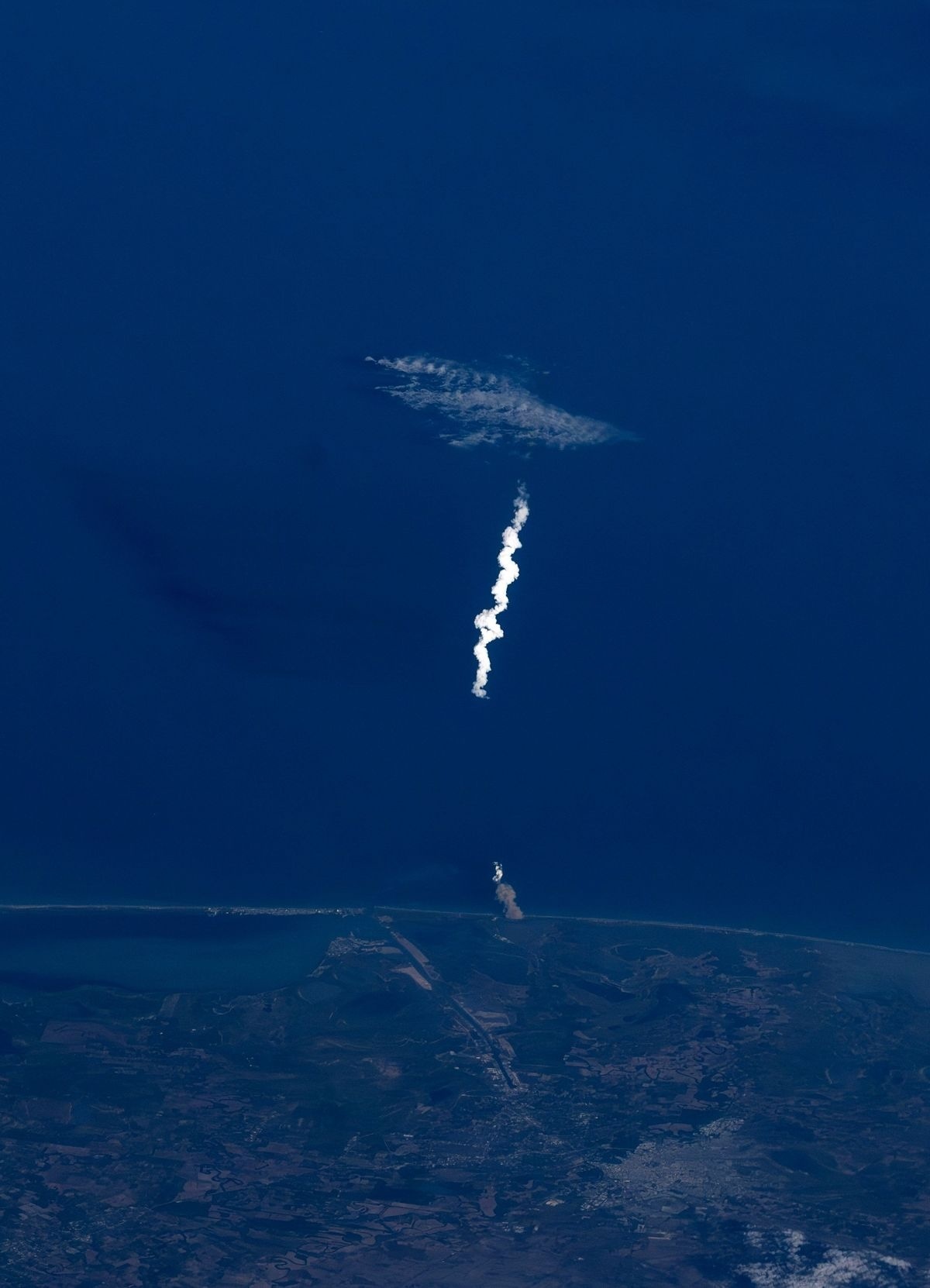22.11.2024
Astronauts and Sen cameras caught a Starship launch perspective unlike any other.

"Starship launch from ISS. We happened to be overhead!" (Image credit: NASA / Don Pettit)
The largest rocket ever built launched on its sixth test flight earlier this week, wowing spectators on the ground — and even some in space.
SpaceX's monstrous, 400-foot-tall (122 meters) Starship rocket launched Tuesday evening (Nov. 19), lifting off from SpaceX's Starbase facility in South Texas at 5 p.m. EST (2200 GMT). The spectacle was watched by tens of thousands in surrounding cities and towns, streamed by millions, and witnessed by a few astronauts aboard the International Space Station (ISS).
NASA astronaut Don Pettit, known, in part, for the fantastic photographs he captures from space, had his camera in hand as the ISS passed over Texas on Tuesday evening, just as Starship's launch was underway. "We just happened to be overhead!" Pettit said in a social media post on X (formerly Twitter),sharing a photo of the rocket's launch plume against the deep blue backdrop of the Gulf of Mexico.
Pettit's camera wasn't the only one on the ISS to capture SpaceX's Starship Flight 6 from orbit. The Earth-imaging company Sen recorded stunning high-resolution views of the launch from its 4K cameras mounted to the exterior of the space station.
"Congratulations, SpaceX, on the increrdible sixth test flight of Starship. We captured the launch plume live from our cameras on the Space Station," Senwrote on X and YouTube while sharing the video.
Sen has been testing its new 4K-resolution cameras on the ISS exterior for the last several months.
The SpaceX Flight 6 mission was the first Starship to launch in the latter half of the day, positioning the sun opposite where it was during the first five Starship launches. The shift shined a new light on Starship for viewers, as the golden hour sun glistened off the rocket's frosty silver exterior.
The difference in lighting could be seen from orbit, too. A blue haze of atmosphere filters Earth and sea in Pettit's photo, as the sunlight illuminates Starship's exhaust plume to a strikingly contrasted white tail, which casts its miles-long shadow on the water below.

Other than the change in launch windows, Starship's sixth flight was largely meant to mirror its fifth, which successfully returned the rocket's Super Heavy booster-stage to the launch site for the first-ever catch of the vehicle using the launch tower's "chopstick arms" on Oct. 13. Flight 6, however, did not attempt a second booster catch.
During the booster's initial return phase, certain onboard criteria for a safe tower catch were not met, dictating the vehicle's safe abort. Instead of being snatched from the air by the tower's chopstick arms, the booster was diverted to an off-shore splashdown in the Gulf of Mexico, safely disposing of the rocket stage away from populated areas about seven minutes after liftoff.
Starship — or just Ship, as SpaceX has begun referring to the vehicle's upper stage — continued onward to space, and managed to succeed in all of its flight objectives. Building on the success of Flight 5, Ship re-lit one of its six Raptor engines in space for the first time. This capability for Starship to make safe reentries following orbital missions, and to reach targets in deep space, like the moon and Mars.
Like the first-stage Super Heavy booster, Ship is also designed for a return landing at the vehicle's launch tower — with the ability to be caught by the same chopstick arms used to grab Super Heavy last month. For its first half-dozen flights, Ship has targeted ocean splashdowns, but SpaceX aims to test Ship's return to the launch pad on an upcoming flight.
The time between Starship flights 5 and 6 was the shortest to date, with just over a month separating the two. Though a launch date has not yet been announced, SpaceX has already begun some pre-launch checkouts on the seventh Starship vehicle.
Quelle: SC
